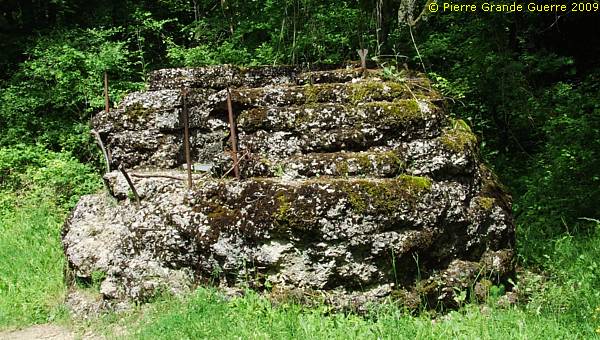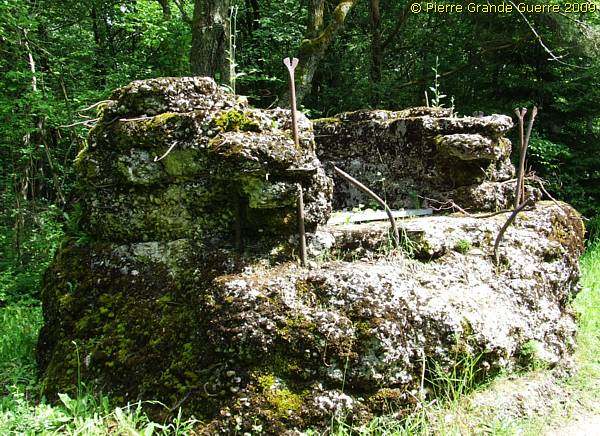VERDUN - Fort de Douaumont
Years of visit: 1986, 1994, 2005, 2009

Verdun is surrounded by a line, in the shape of a horse shoe, strengthened with 12 forts and several strong points. We do now focus on the Fort de Douaumont. A visit to the superstructure and to the interior of the fort.
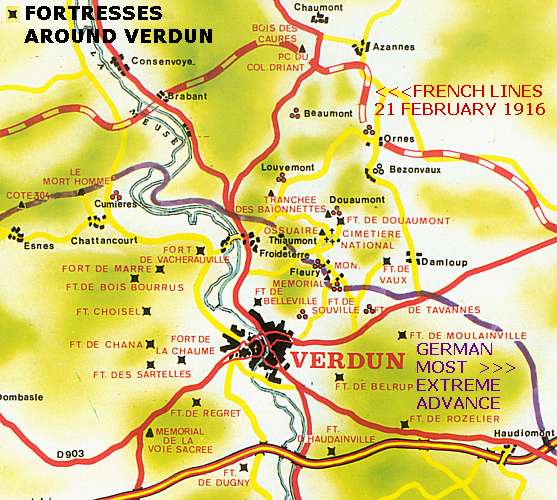
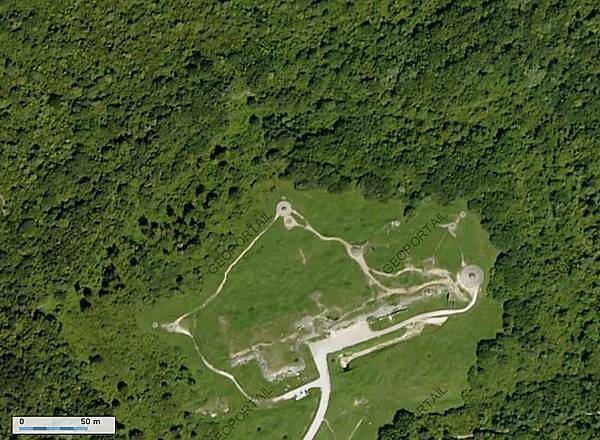
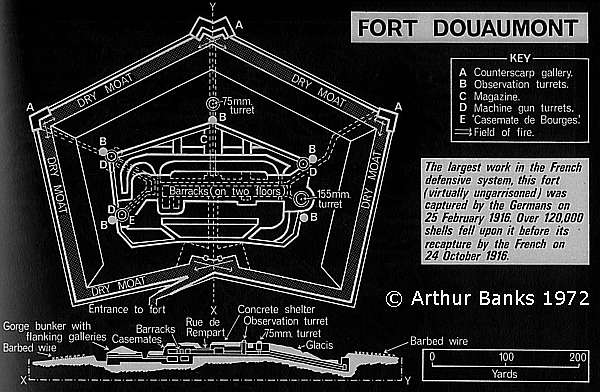

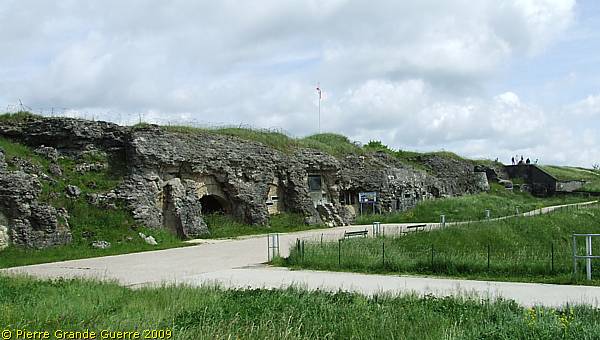
The wartime entrance to Fort de Douaumont.
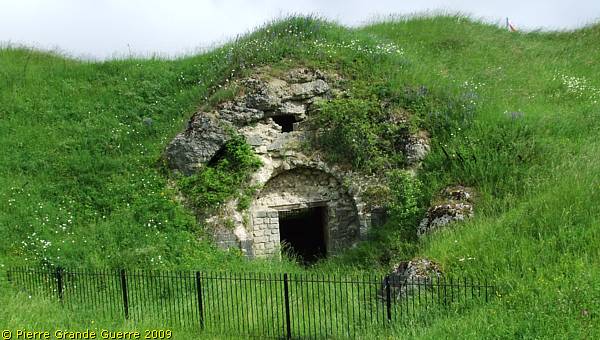
The main entrance used to look like this.

The other side of the gate in the former dry moat.
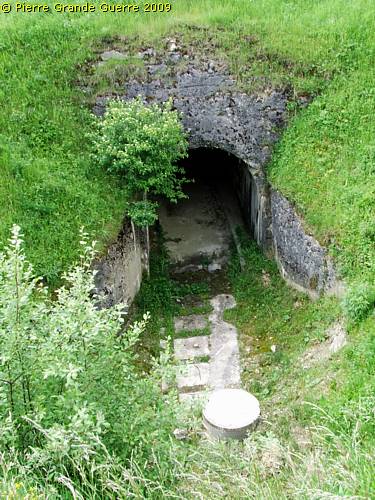
We walk from the south-west corner to the east.
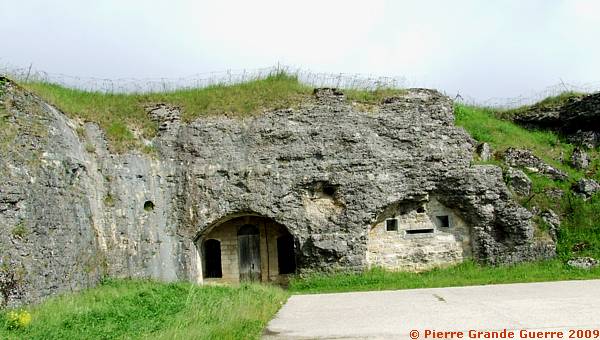

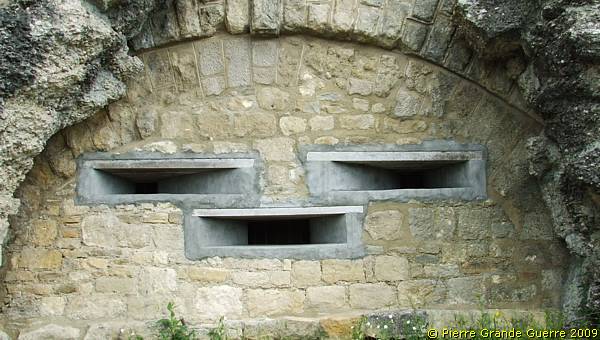
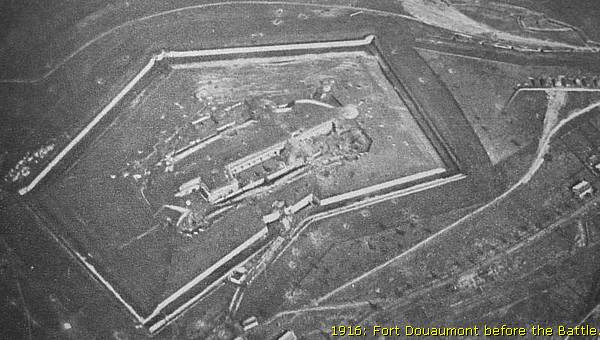
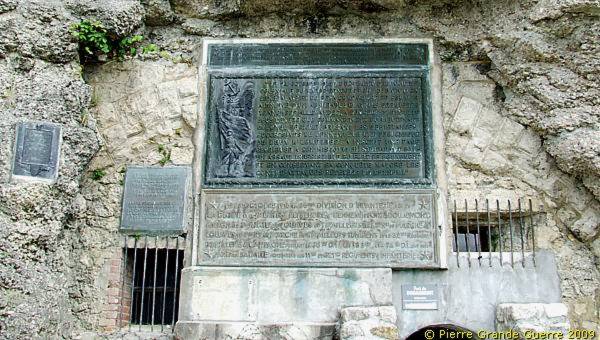

"24 OCTOBER 1916, WHEN THE R.I.C.M. ( Colonial Infantry Regiment of Maroc ) DID SET FOOT ON THE FORT DE DOUAUMONT, THE 321ST REGIMENT ON IT'S RIGHT SIDE, ATTACKED THE EAST FRONT OF THE STRONGHOLD, AND THE 4TH REGIMENT MIXTE DE ZOUAVES AND TIRAILLEURS ( mixed regiment of Zouaves and Riflemen ) AT IT'S LEFT, PENETRATED IN THE WEST MOAT. THESE THREE REGIMENTS, TOGETHER IN THEIR STRUGGLE, SHARE NOW THE HONOUR TO SEE WRITTEN ON THEIR BANNERS THE GLORIOUS NAME: VERDUN- DOUAUMONT ."
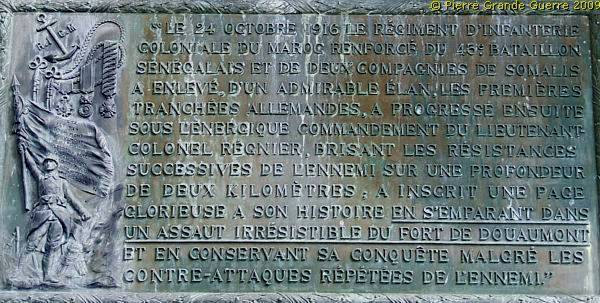
"ON 24 OCTOBER 1916, THE COLONIAL INFANTRY REGIMENT OF MAROC ( R.I.C.M.
), AUXILIATED BY THE 43RD SENEGALESE BATTALION AND TWO SOMALI COMPANIES,
HAS CONQUERED WITH AN ADMIRABLE COURAGE THE FIRST GERMAN LINES, NEXT IT HAS PROGRESSED UNDER THE ENERGETIC COMMAND OF LIEUTENANT COLONEL REGNIER, BREAKING THE FOLLOWING RESISTANCES OF THE ENEMY OVER A DEPTH OF TWO KILOMETRES, HAS WRITTEN A GLORIOUS PAGE IN IT'S HISTORY, OVERPOWERING IN AN IRRESISTABLE ATTACK ON FORT DE DOUAUMONT AND HOLDING IT'S CONQUEST IN SPITE OF THE REPETITIVE COUNTER ATTACKS FROM THE ENEMY."

"ON 24 OCTOBER 1916 THE 38TH INFANTRY DIVISION HAS HAD THE GLORY AND THE MERIT OF RETAKING THE FORT DE DOUAUMONT FROM THE ENEMY. THE R.I.C.M., THE 4TH REGIMENT MIXTE DE ZOUAVES AND TIRAILLEURS, THE 4TH MARCH REGIMENT DE ZOUAVES, THE 8TH MARCH REGIMENT OF TUNISIAN RIFLEMEN, AND THE 32ND FIELD ARTILLERY REGIMENT, TOGETHER FORMING THE 38TH DIVISION, THE 133RD AND 74TH INFANTRY DIVISIONS HAVE TAKEN PART IN THE BATTLE, IN PARTICULAR THE 11TH AND 321ST REGIMENTS."
Later I will return to these events in some more detail.
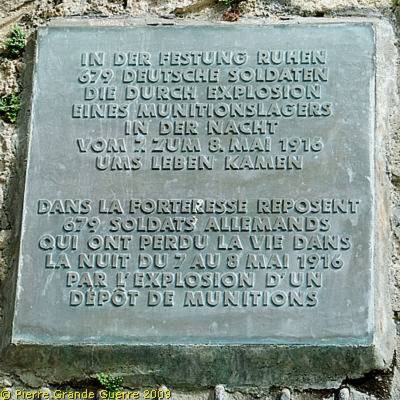
A view at the south-east front of the fort.
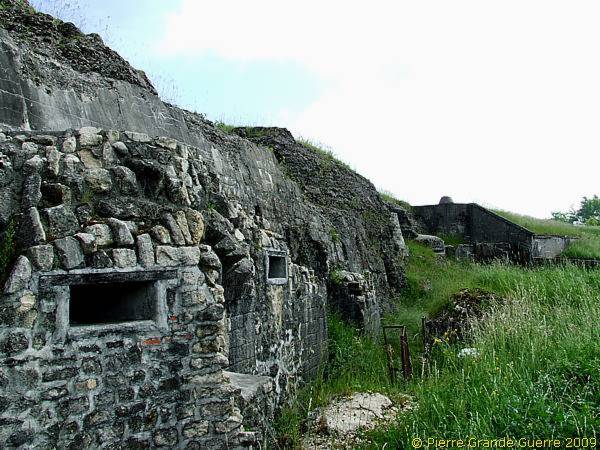
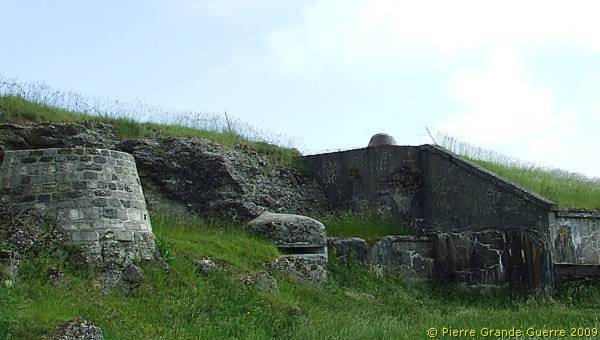
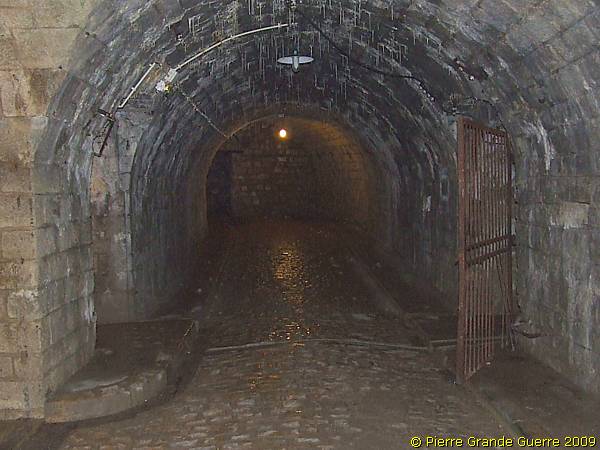
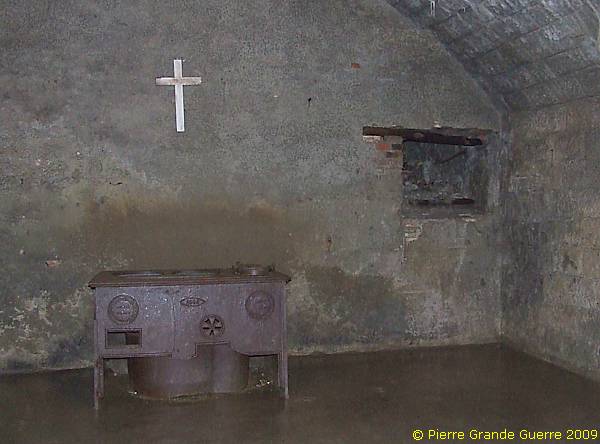
Life in Fort de Douaumont must have been dark, ...
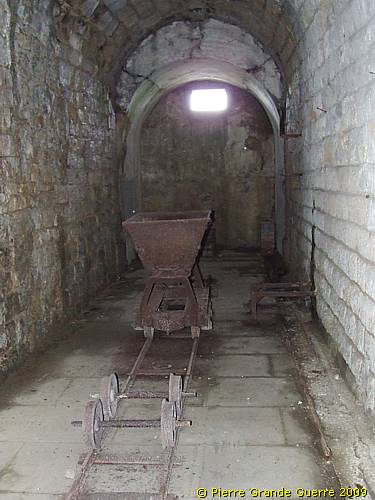
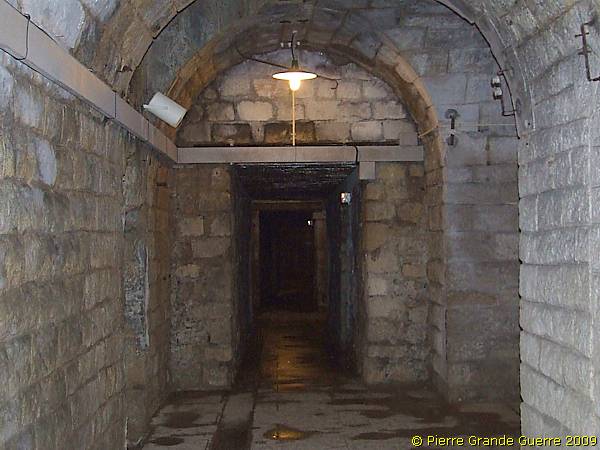
We pass the room of the Lazaret, the dressing station.

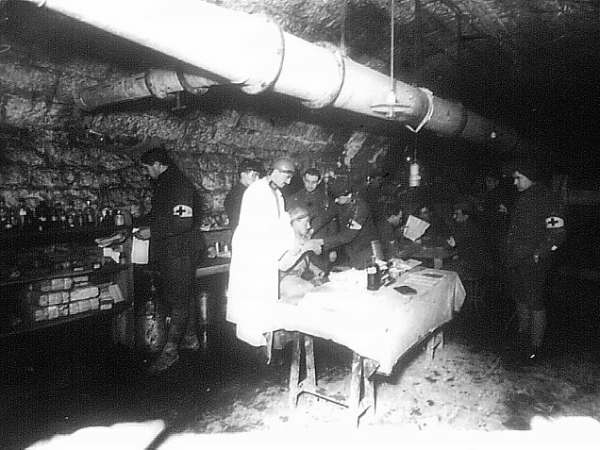
A dormitory for the soldiers.
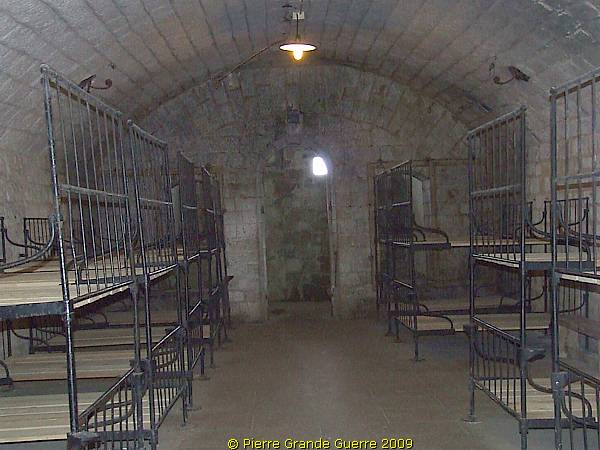
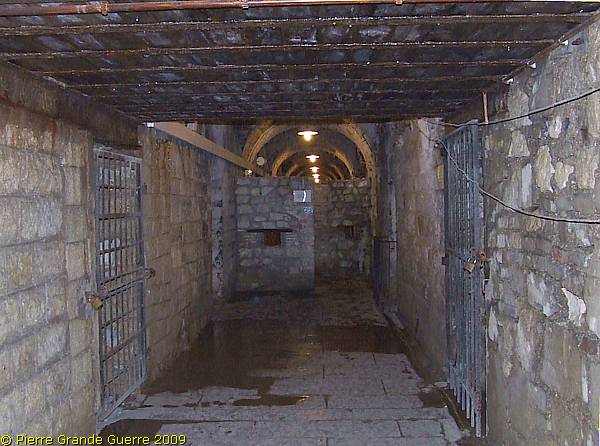
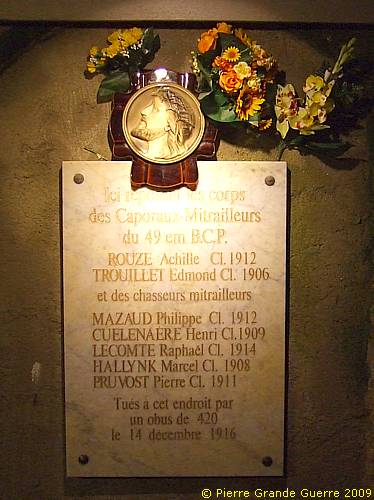
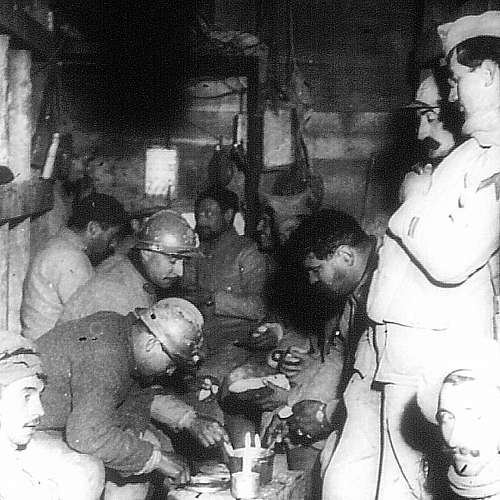
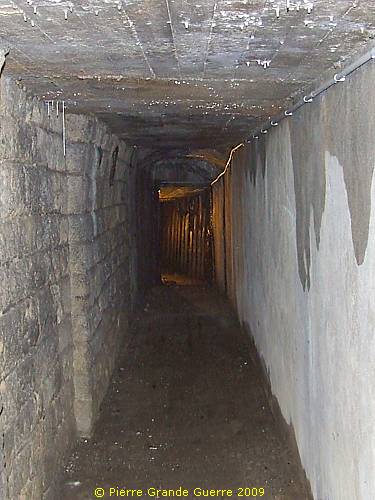
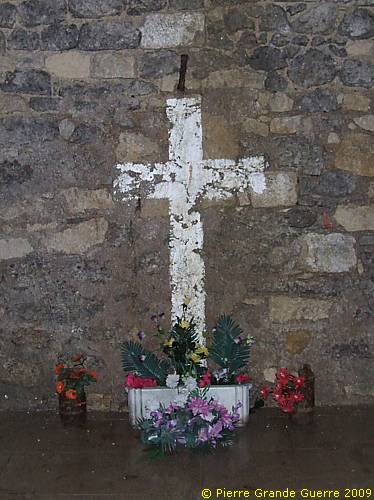
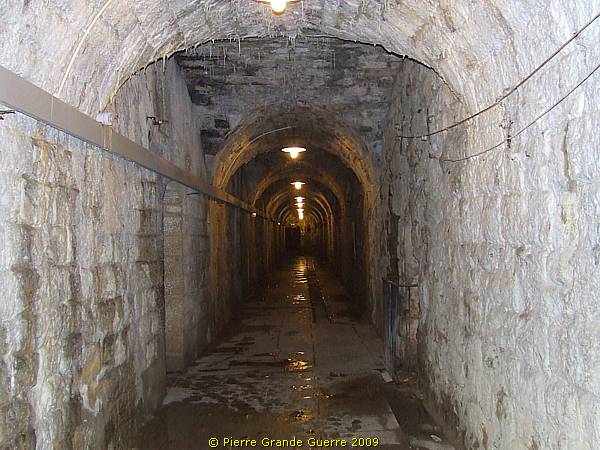
The German Operation Gericht 21-25 February 1916
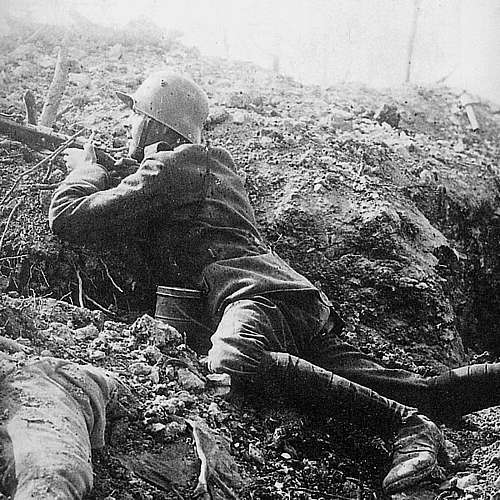
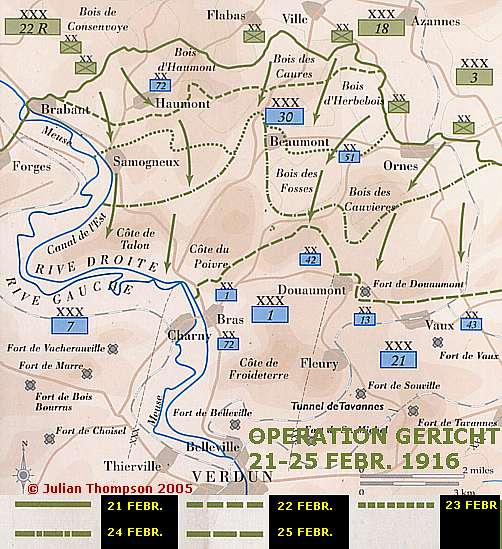
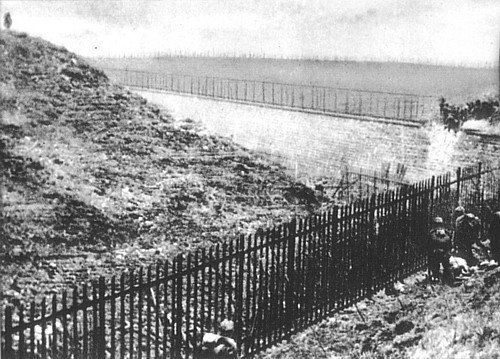

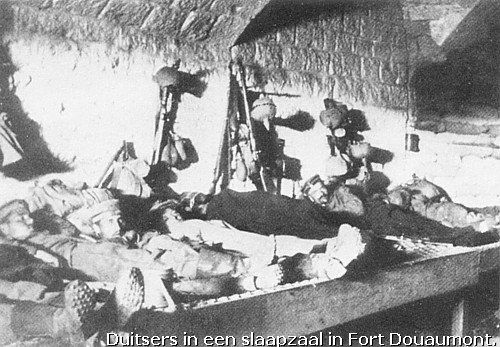
We continue our exploration of the fort.
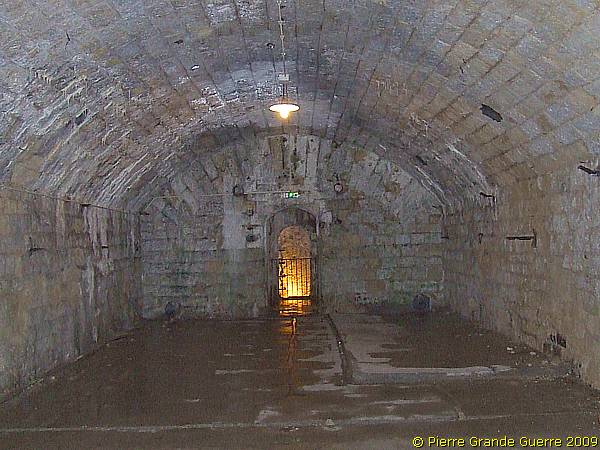
The officers dormitory.

The interior of the small room of an officer.
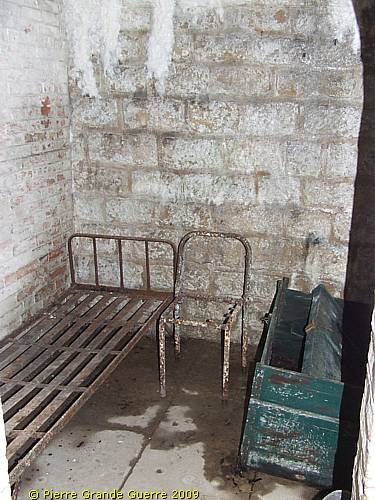
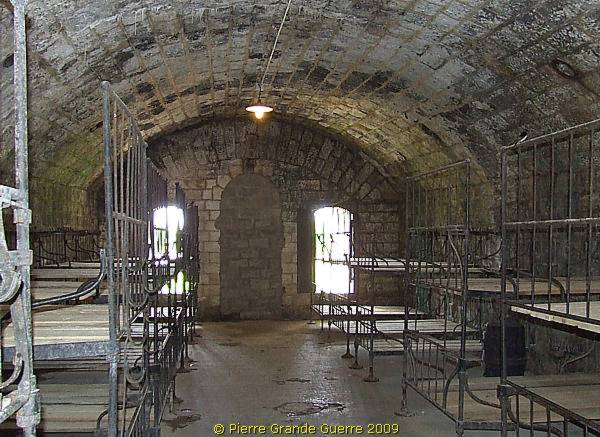
On the right in this room stands this stove.
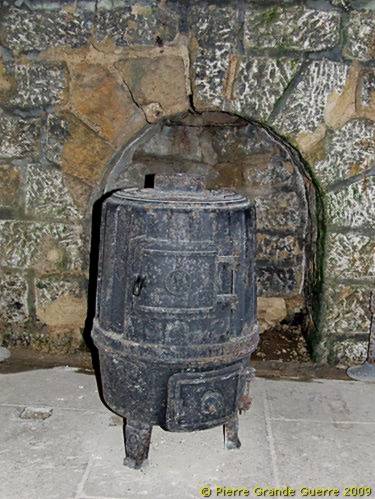

The kitchen of the fort.
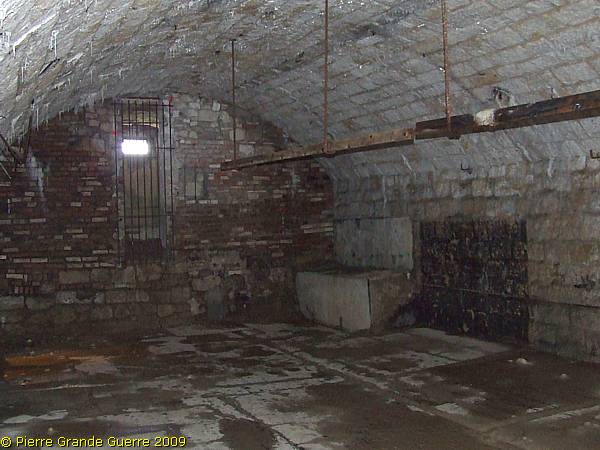
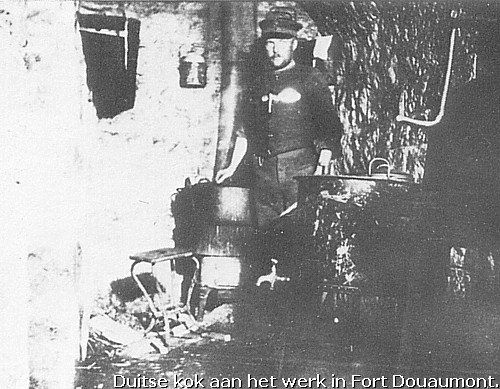

The Explosion Disaster of 8 May 1916
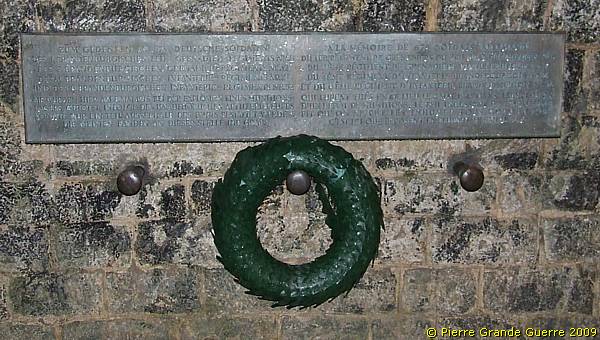
"IN MEMORY OF 679 GERMAN SOLDIERS OF THE 4TH (Btn.) BRANDENBURGER LEIB REGIMENT NR. 8, OF THE 2ND BRANDENBURGER GRENADEER REGIMENT NR. 12, OF THE 4TH BRANDENBURGER INFANTRY REGIMENT NR. 24, OF THE 6TH BRANDENBURGER INFANTRY REGIMENT NR. 52. THEY WERE KILLED HERE ON 8 MAY 1916 BY THE EXPLOSION OF AN AMMUNITION DEPOT. DUE TO UNCEASING ARTILLERY FIRE ONLY A PART COULD HAVE BEEN BURIED OUTSIDE THE FORTRESS. MOST OF THEM FOUND THEIR GRAVE ON THIS LOCATION."
On 8 May 1916, around four o'clock in the morning, panic broke out under the German occupiers. "The Blacks are coming!", some soldiers shouted in confusion. They wrongly supposed they were attacked by Maroccan fierceless forces of the R.I.C.M.. A direct artillery hit reached some ammunition in a corridor and some ready to use grenades.
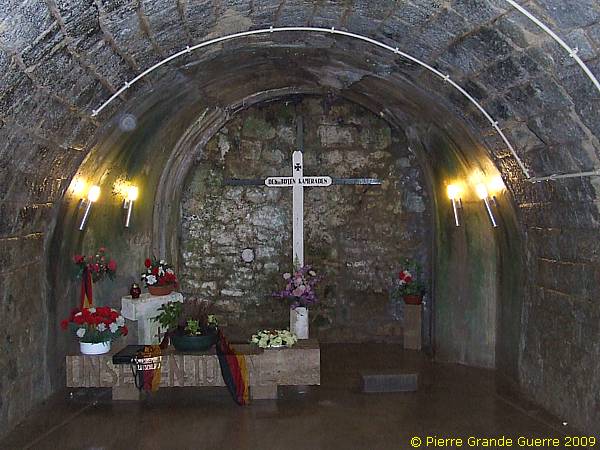
The ammunition depot is quickly sealed up and, to this day, remains as a mass grave within the fort. Nowadays there is a chapel to commemorate the more than 700 German deads, caused by this one explosion disaster. 679 Deceased of them are buried behind the wall in the back.
Source: the witness report of the German Stabarzt Dr. B. Hallauer
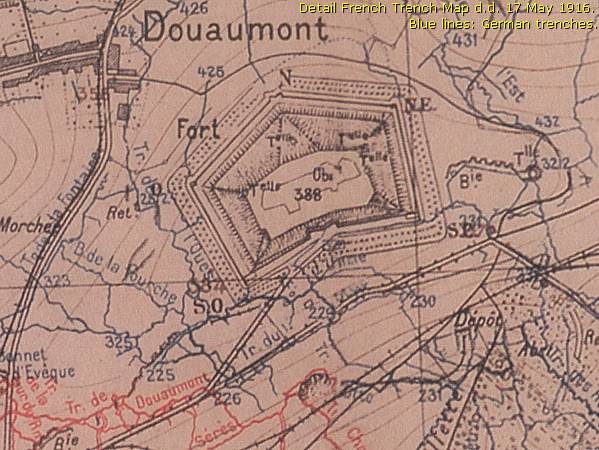
We go down to the underground floor.
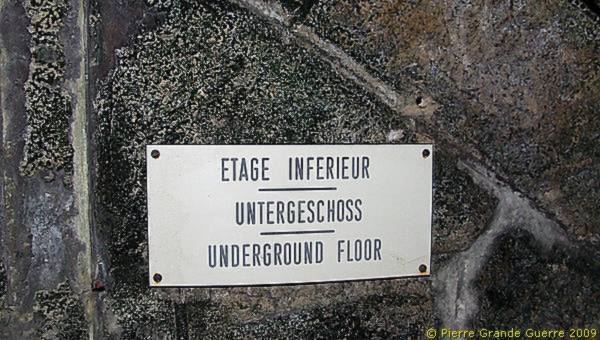
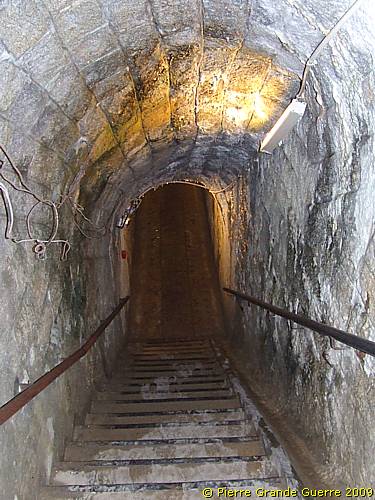
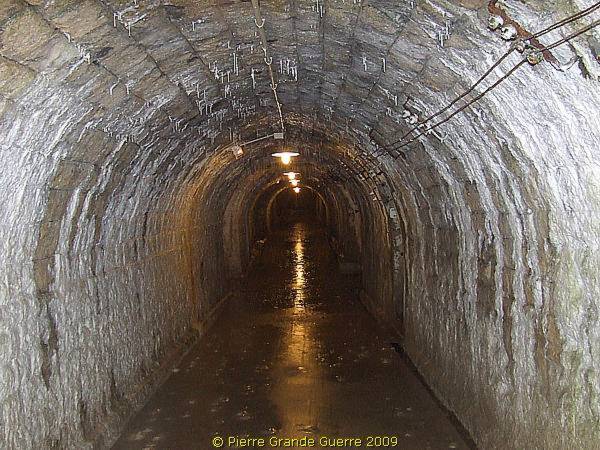
The wash room.
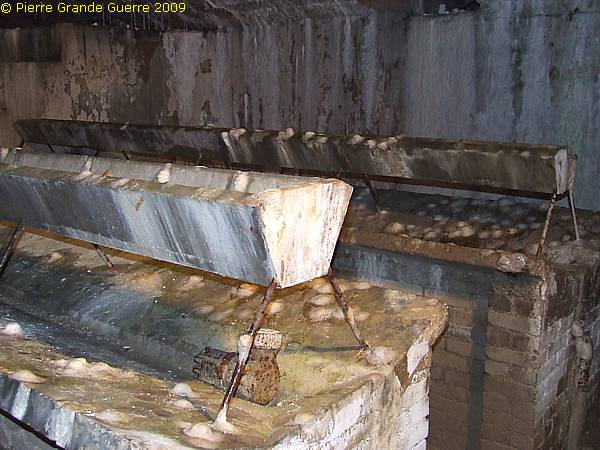
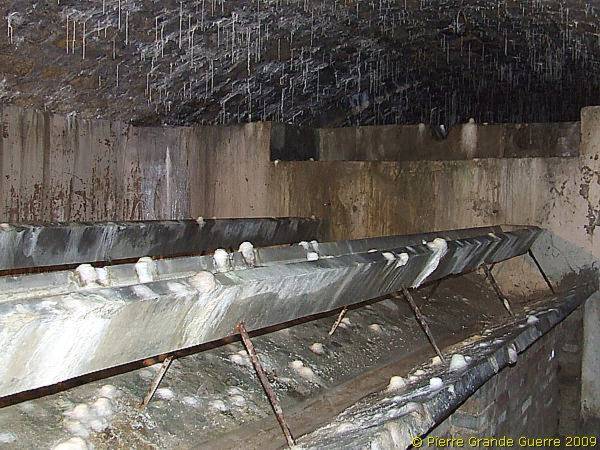
The workshop and room for the electricity generator.
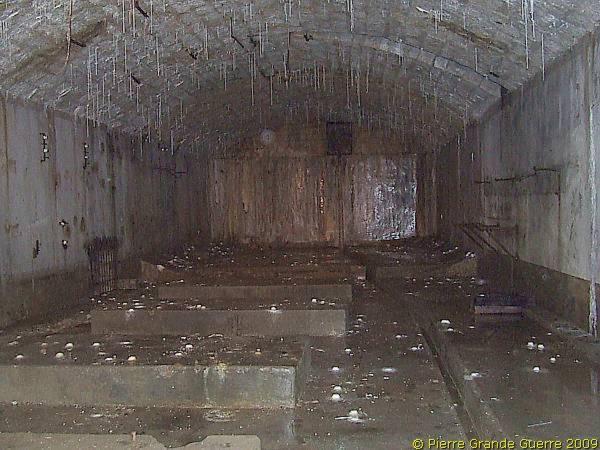
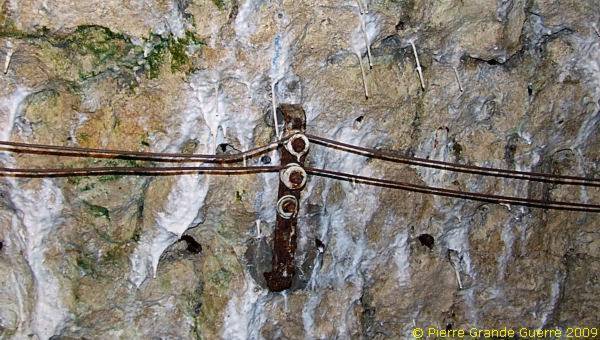
The desinfection room.

A gun powder depot and ...
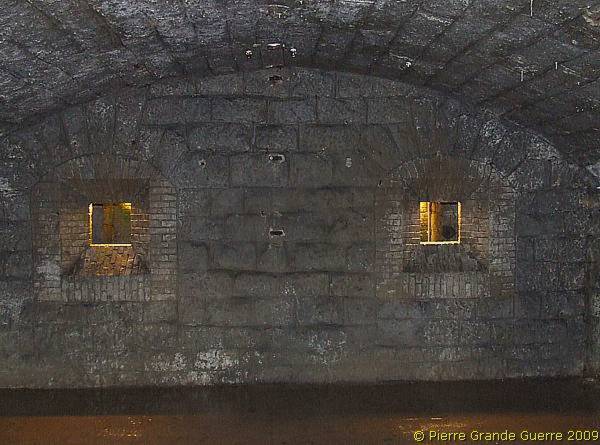
... a battle Command Post.
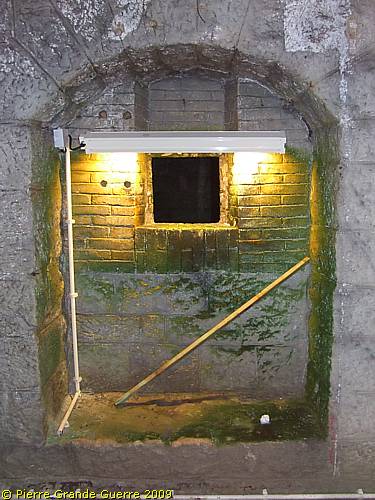
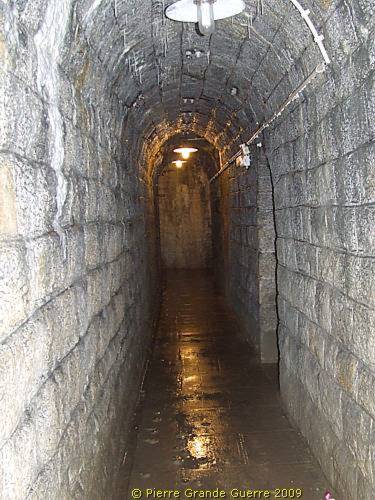
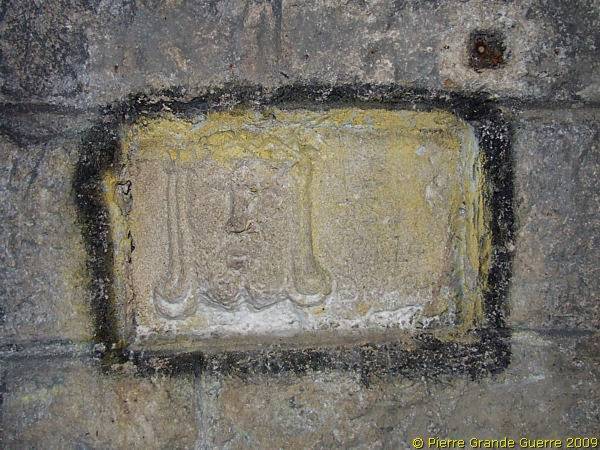
Nearby another piece of soldiers art: a ship with sails.
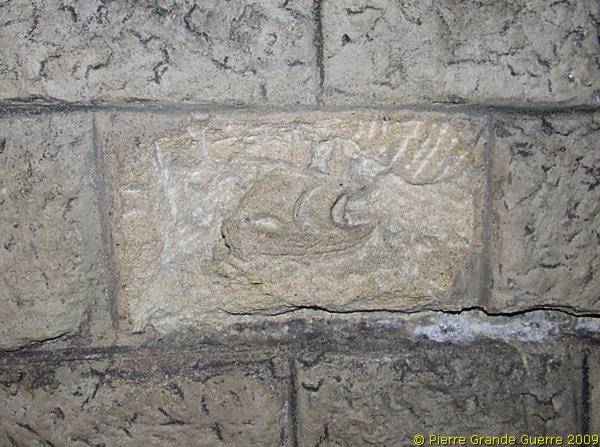
We leave the cellar and climb the stairs up again ...
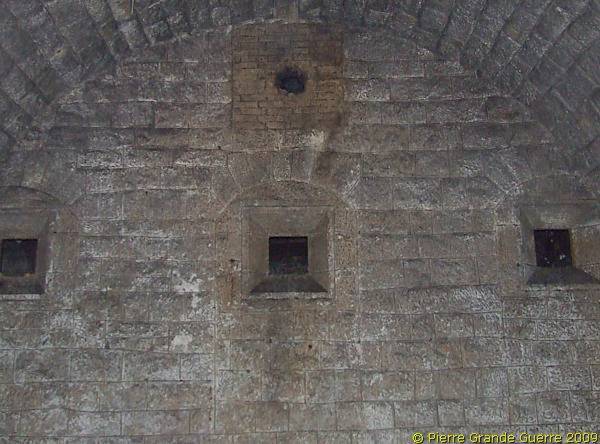

We pass these 1917 latrines, ...
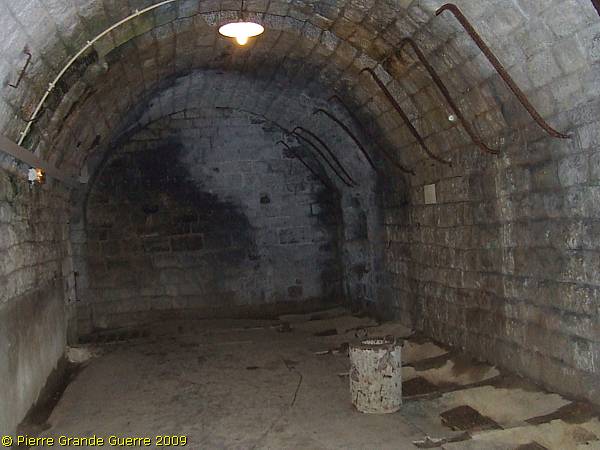
... and in the next corridor we detect this object, a part of the ventilation system.
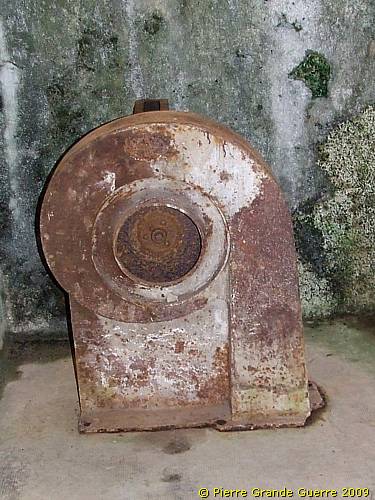
Here we enter the room at the base of the 155 mm gun turret.
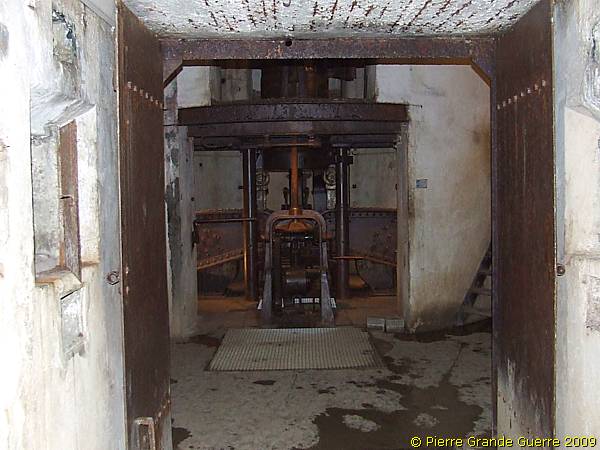
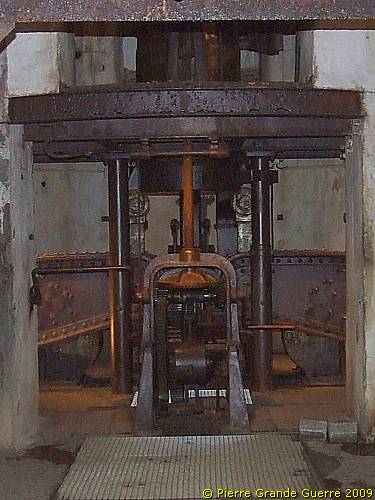
A dumb-waiter or elevator for lifting the shells.
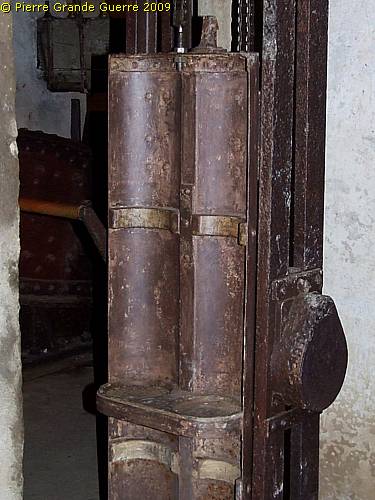
Machinery to lift the cupola, to rotate and direct the gun.
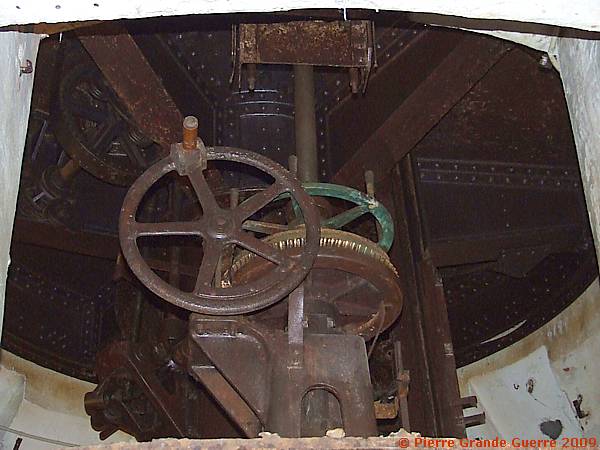
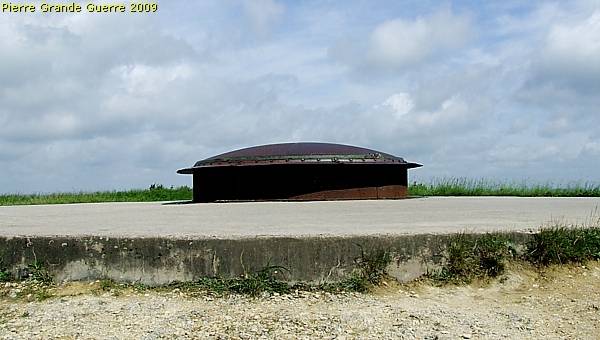
The cupola of the 155 mm gun turret.

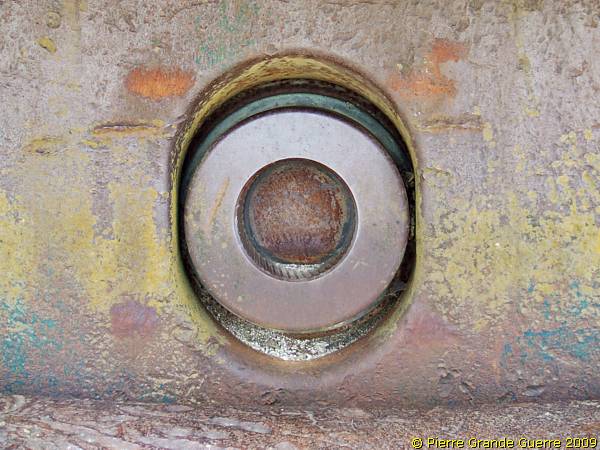

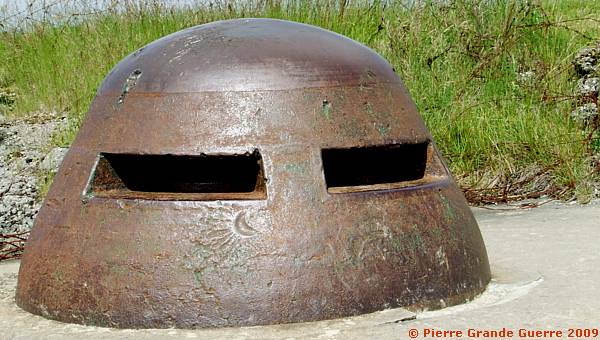
View from the east side over the superstructure of the fort.
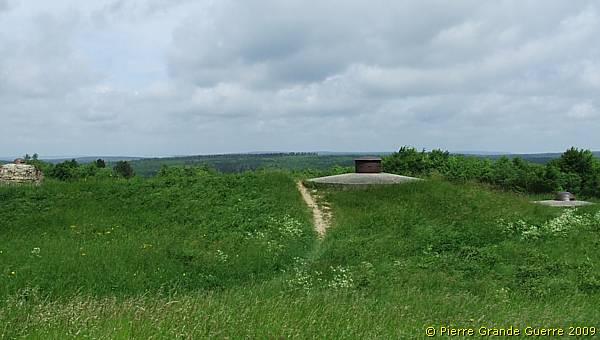
The north-eastern point of the dry moat.
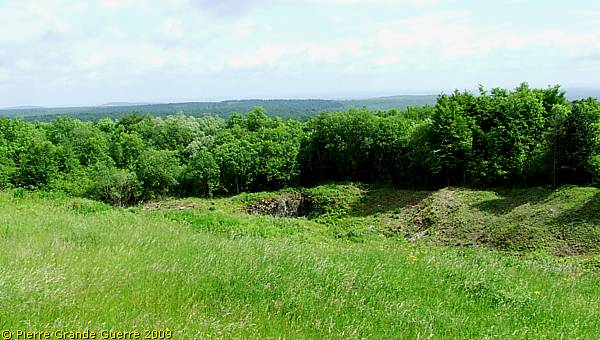
A machine gun turret at the east.

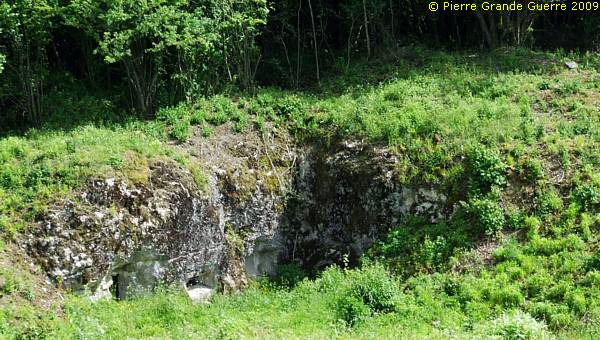
Same machine gun turret, closer up.
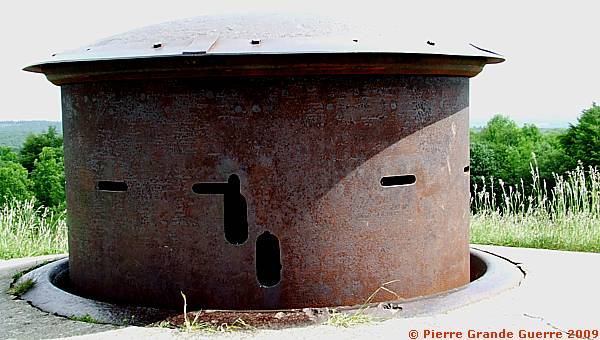
View over the "glacis" from east to west.
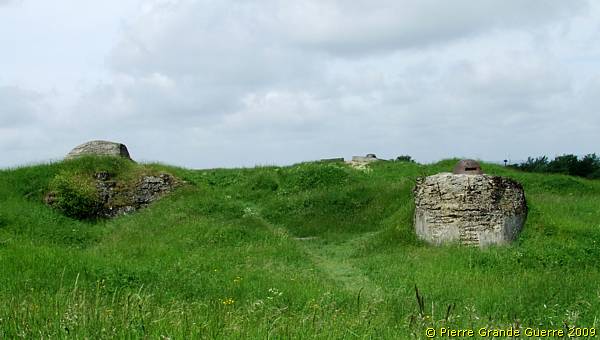
Observation post near the centre of the top.
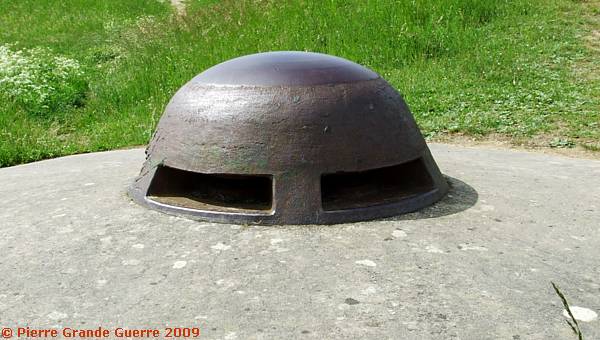
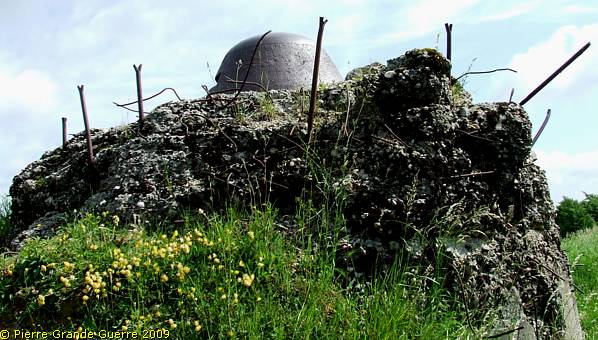
View eastward.
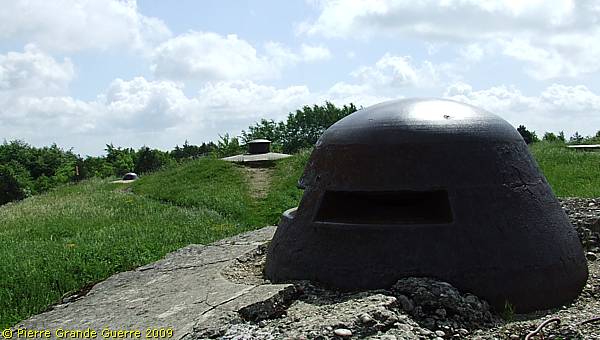
The French counter-attacks

General Joffre appointed General Pétain as the Commander of the defense of the sector of Verdun and to recapture the fort and it's surroundings.
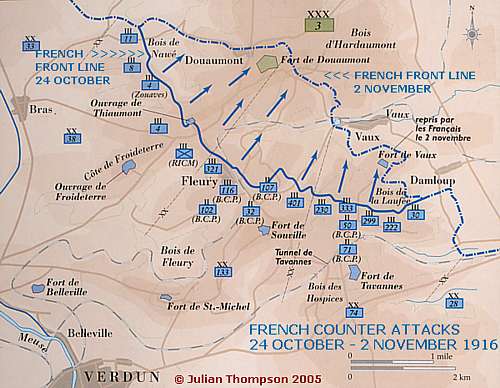
Later, on 24 October, Pétain's successor, Général Nivelle, launched new offensives.
On 24 October, the Army Corps of Général Mangin succeeded to recapture the Fort de Douaumont. As we have been reading on the bronze panels above the entrance, thanks to a large and decisive contribution of colonial troops, from Marocco, Somalia, Senegal, Tunesia, and Algeria. The operation in the whole sector ended on 15 December 1916.
Some French period images made during and after the battle
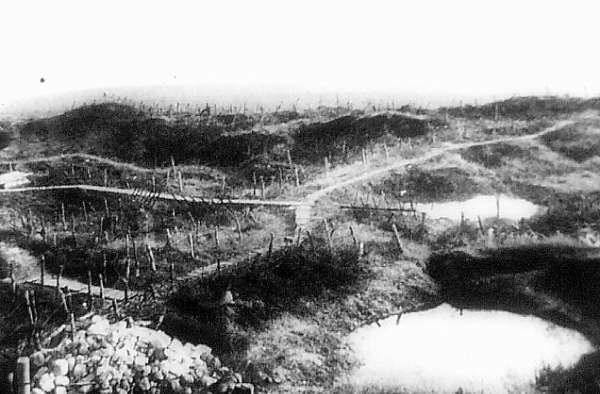

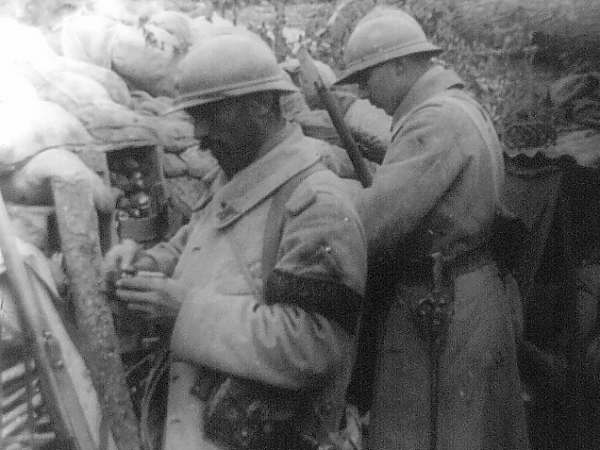

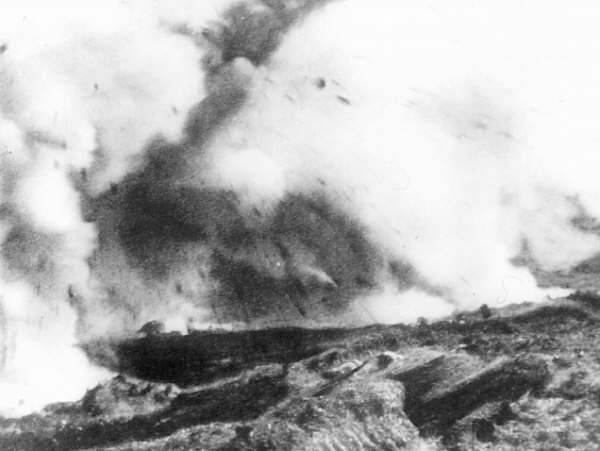
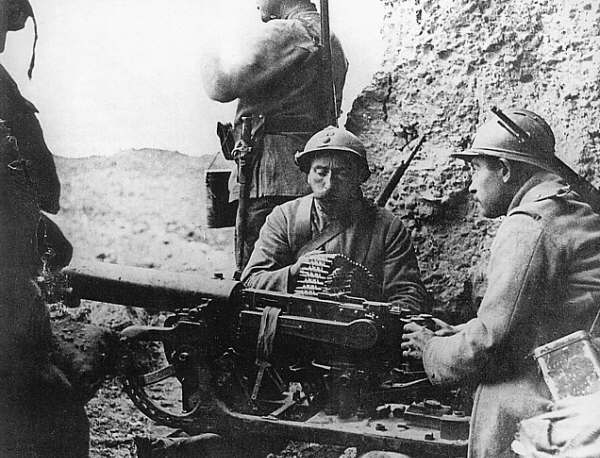
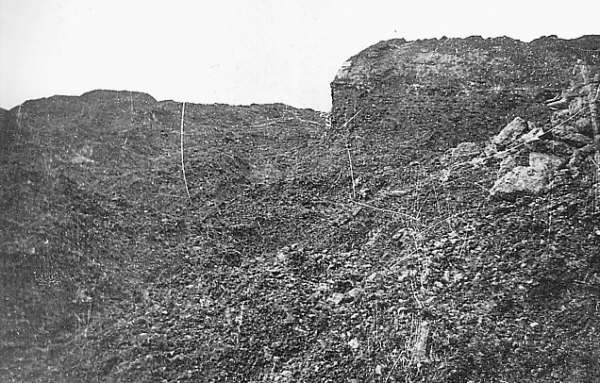
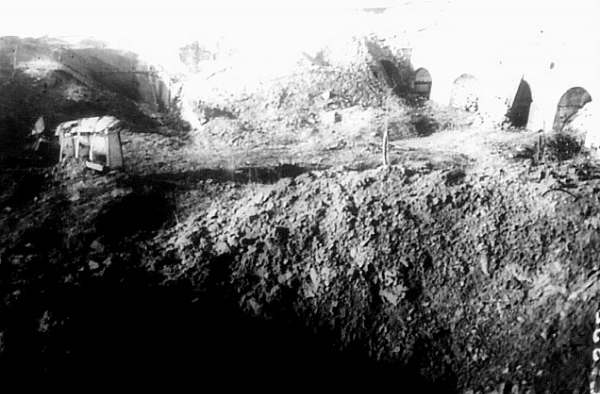
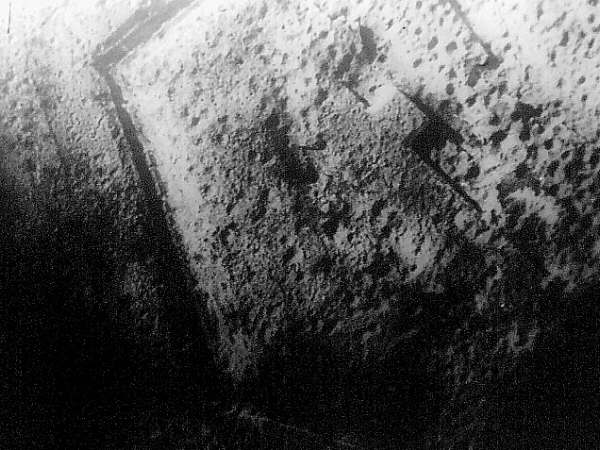
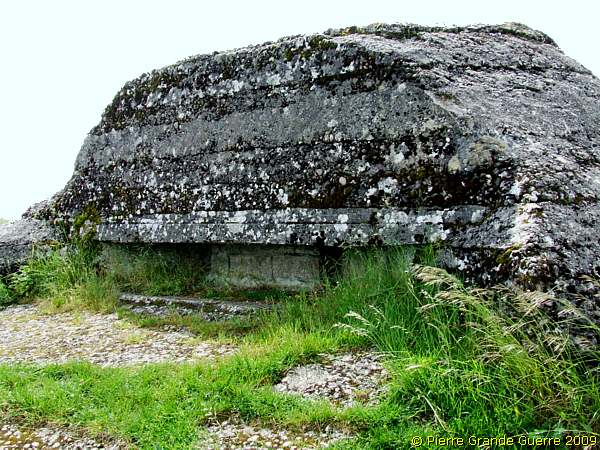
View from the top northward to the former German lines.
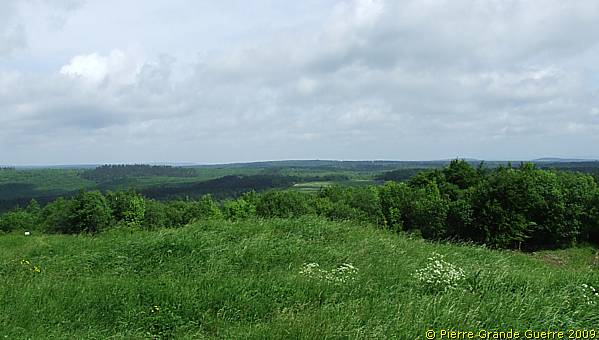
The 75 mm gun turret at the centre of the roof.


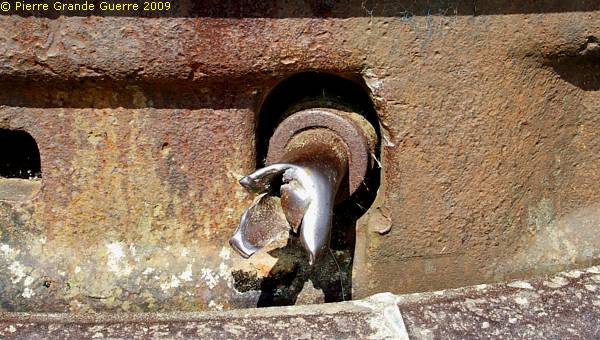
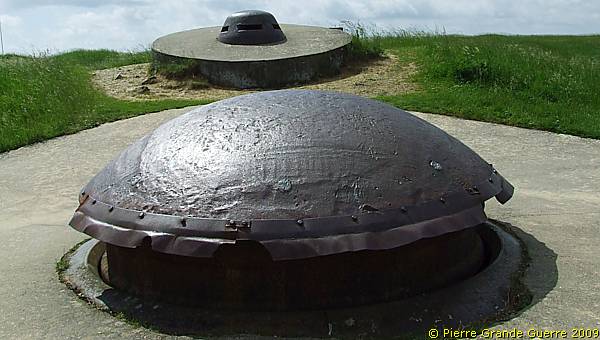

View from the centre eastward.
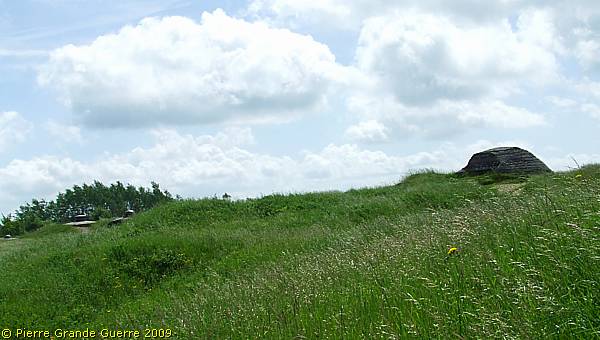
View up southward.
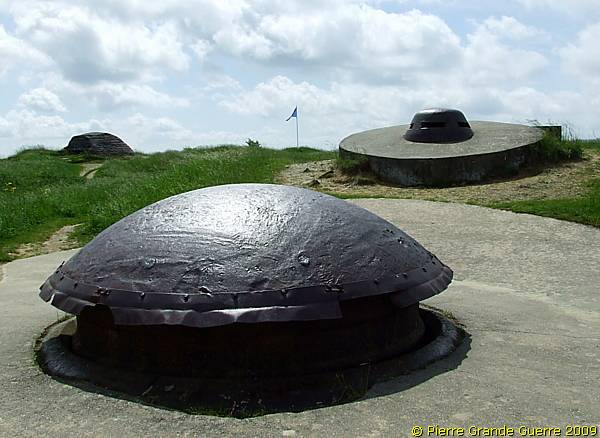
Again a view northward from the central observation bell.
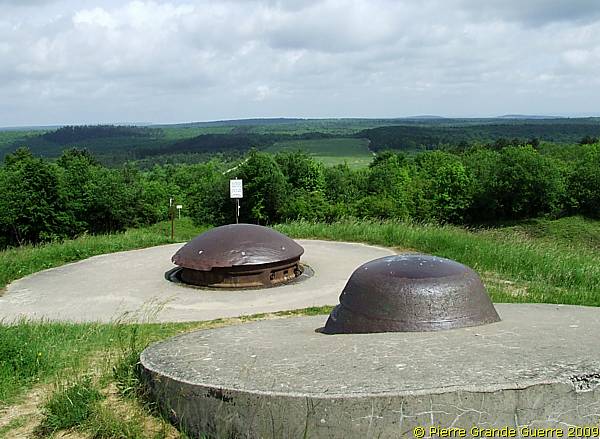
Machine gun turret at the west side.
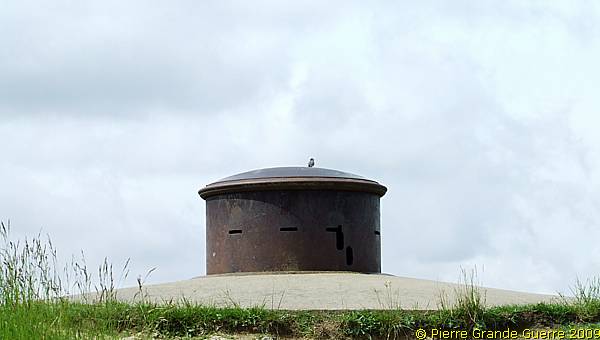
View to the west.
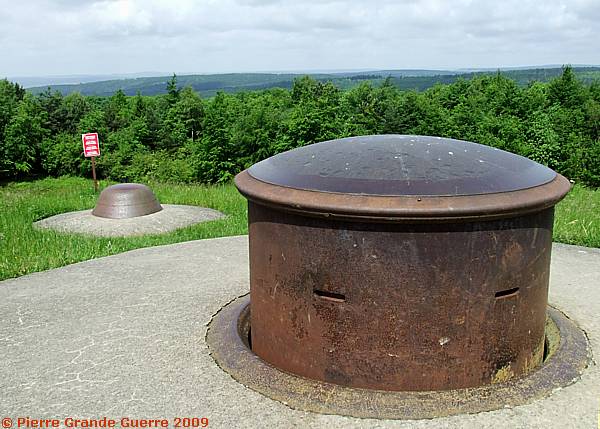
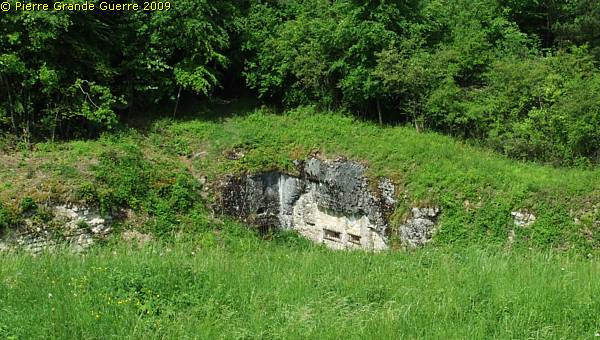
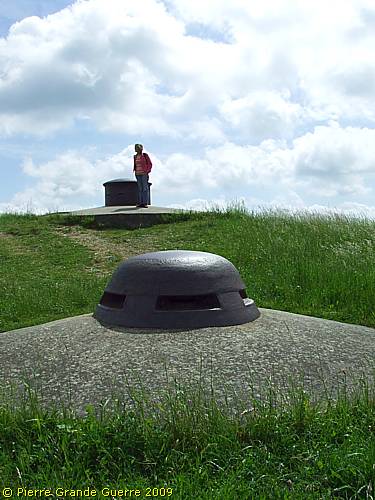
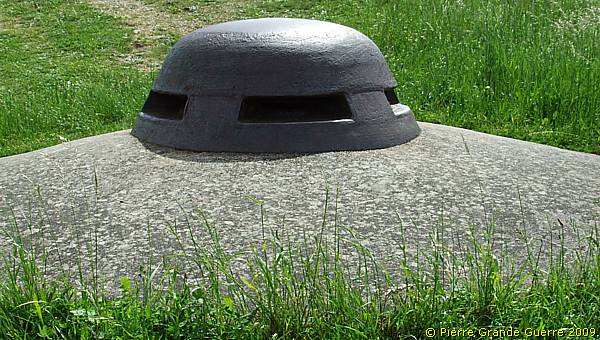
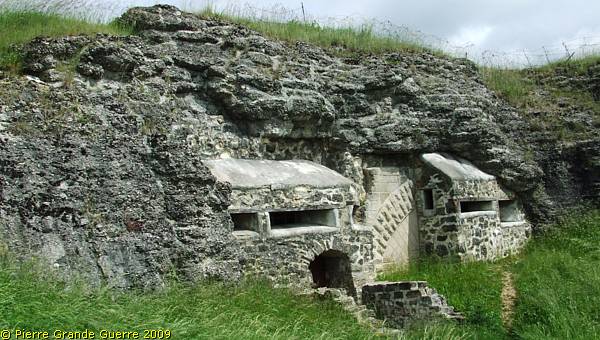
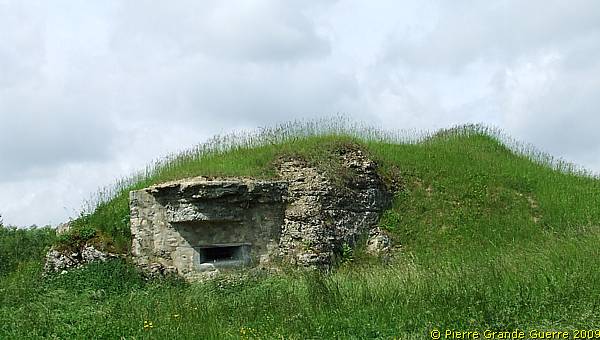
Again: the west corner of the fort.
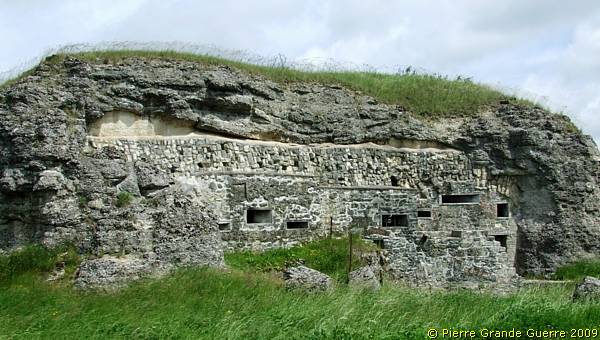
These renovations are of a later period.
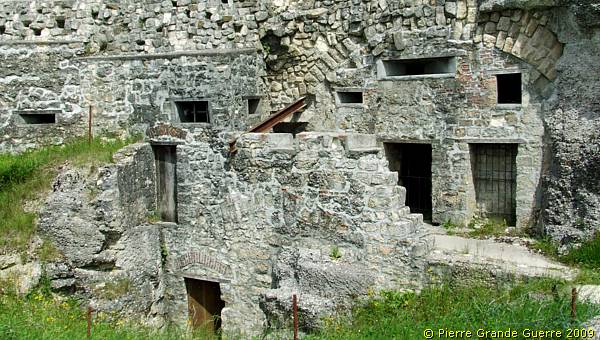
Now we have been around this tour around Fort de Douaumont.
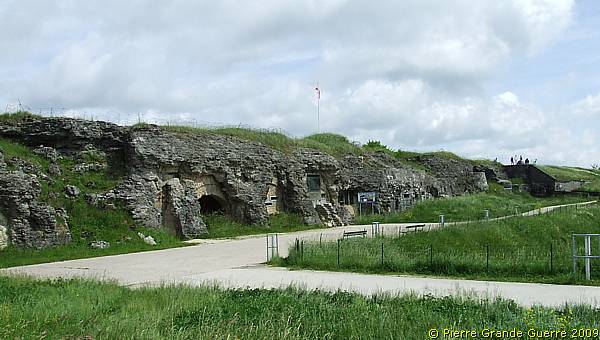

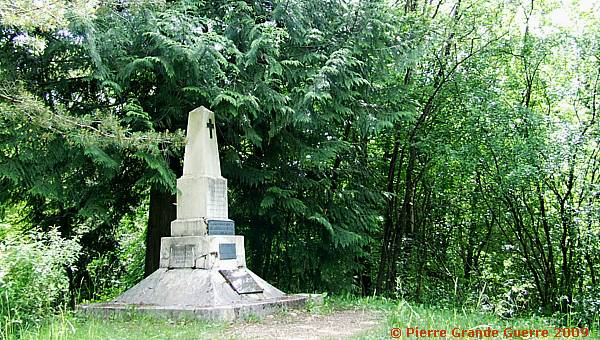
This concise inscription tells a horrific event about the period of the German occupation of Fort de Douaumont and it's near surroundings from 25 February until 24 October 1916:
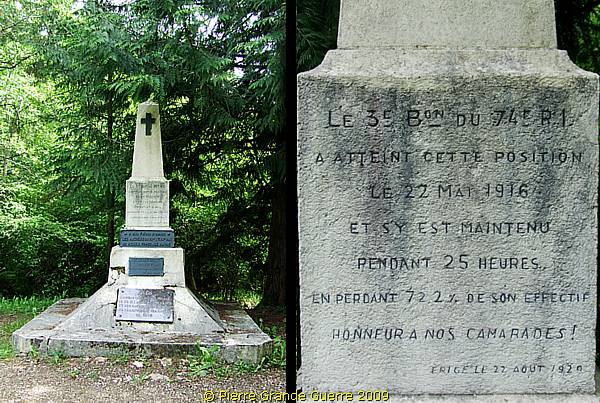
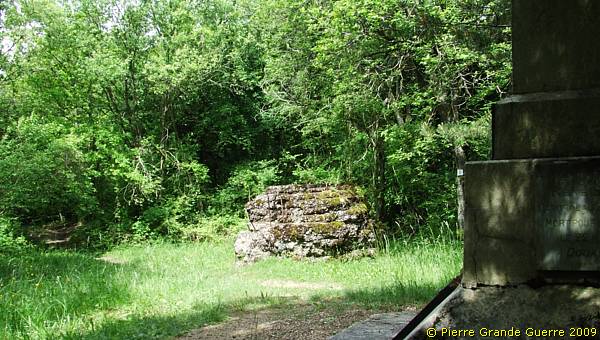
This is all that is left of the gun turret.
